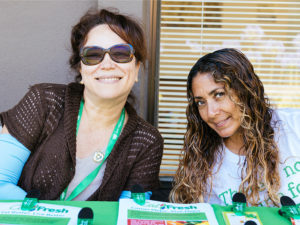 Every other month, Alex is a steering committee member and also meets with the Immigrants’ Rights and Justice Work Group of Marin. She is joined by representatives from nearly two dozen other community organizations.
Every other month, Alex is a steering committee member and also meets with the Immigrants’ Rights and Justice Work Group of Marin. She is joined by representatives from nearly two dozen other community organizations.
As the Food Bank’s Senior Program Manager for CalFresh, Alex has seen firsthand the struggles some immigrant communities face regarding food insecurity. 45% of undocumented immigrants in California are food insecure, according to a report by Food4AllCoalition.
She understands how misconceptions and policies like the Public Charge rules, which deny lawful permanent residency to those who rely on public benefits, can prevent immigrant families from accessing crucial services. While CalFresh isn’t a public charge program, many still won’t apply out of fear. By partnering with fellow organizations in Marin, the Food Bank is able to be part of holistically serving our community and addressing the challenges they face.
We spoke with Alex to learn more about what the Committee is currently focusing on and what their plans are to further reach and support immigrant communities in Marin.
Food Bank: Can you tell us a little more about the Immigrant Rights and Justice Work Group and how it started?
Alex: The Immigrant Rights and Justice Work Group started as a Public Charge Working Group at first. We started to see lack of enrollment in public benefits, such as MediCal, CalFresh, and WIC, rental assistance, and this was due to the Public Charge fears during the Trump administration. So, we started to meet to talk about the challenges and what we were hearing on the ground. We also shared data and started to talk about strategies to support and undo the harm of the Public Charge rule towards the community.
Today, we’re still working with many nonprofits and organizations that represent the diversity of Marin County that work with older adults, children, families, the unhoused community, etc. We [Food Bank] were one of the initial partners that began raising the concern about access to CalFresh.
FB: What inspired you to do this work?
What really inspires me about this work is being able to lead by the voices from lived experience on the barriers to access and work with partners because I’m able to do my work in a multidisciplinary way and address the root causes of hunger. I’m able to listen and understand the challenges that organizations face. I get to hear about how they’re providing resources like rental assistance to clients that are facing high rent and costs while alleviating barriers to fair wages.
To me, food access brings an opening to the world of what more we can be doing. It’s such an ongoing opportunity for me to constantly learn and understand the community. The collective, the partnerships, the on-the-ground work, and overall motivation to help support clients in a holistic way are what inspires me.
FB: What is the Working Group currently focusing on?
We’re currently focusing on these priority areas:
- Ensure access to benefits and services, including disaster-related benefits
- Advance equitable recovery from COVID-19
- Implement federal immigration relief policies
- Reduce educational disparities and inequities
FB: Are there any specific challenges immigrant communities in Marin face?
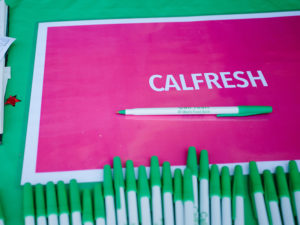
Alex: Most of the immigrant community in Marin County is from Guatemala, Mexico and El Salvador. So, one challenge is they must navigate languages since not everyone speaks Spanish and there aren’t community interpreters and materials for the Mayan Indigenous community.
The other main challenge overall for the immigrant community is fear in advocating for their rights. The immigrant community feels like they have no voice due to racism against immigration. We also saw that with the pandemic and everything that was happening there were challenges on access to housing, fair wages, education, immigration status, and really understanding the Public Charge rule. So that’s why we’re working with organizations that represent the diversity of Marin County that also work with seniors, children, families, the unhoused, etc.
I’ve also seen more community members getting involved in community meetings and initiatives to talk about the challenges, find ways to get more involved and co-create solutions.
FB: What are you most proud of accomplishing within the Work Group?
I would say that the thing that I’m proud of is just the immediate support everyone provides as challenges occur. I’ve been able to share how we’re able to message around providing food for all in our pantry network and making it a safe space for all.
We also collaborate with First 5 to host forums. Every year they have several educational forums and educate on policy, bring in policymakers, along with Marin Community Foundation and Health and Human Services.
FB: Is there anything else you’d like to share?
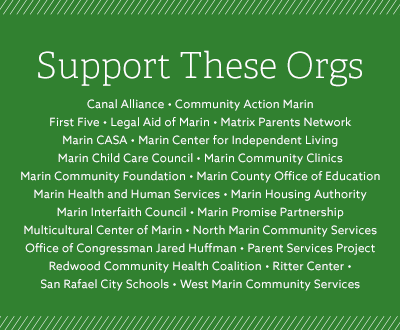 This partnership is crucial. We’re all working in specific areas and in many ways , which can sometimes make us work in a silo. But by broadening and expanding partnerships, as we do in the IRJ Work Group we can do so much more. As a trusted member we can share resources of other organizations, which gives immigrants more ease while they get back on their feet, and that to me is collective impact towards sustainability.
This partnership is crucial. We’re all working in specific areas and in many ways , which can sometimes make us work in a silo. But by broadening and expanding partnerships, as we do in the IRJ Work Group we can do so much more. As a trusted member we can share resources of other organizations, which gives immigrants more ease while they get back on their feet, and that to me is collective impact towards sustainability.
The gratitude that comes from the community is so powerful. They pray for our families and us and give us blessings from their heart. And that to me is priceless.
The Immigrant Rights and Justice Work Group includes the following organizations:
- Canal Alliance
- Community Action Marin
- First Five
- Legal Aid of Marin
- Matrix Parents Network
- Marin CASA
- Marin Center for Independent Living
- Marin Child Care Council
- Marin Community Clinics
- Marin Community Foundation
- Marin County Office of Education
- Marin Health and Human Services
- Marin Housing Authority
- Marin Interfaith Council
- Marin Promise Partnership
- Multicultural Center of Marin
- North Marin Community Services
- Office of Congressman Jared Huffman
- Parent Services Project
- Redwood Community Health Coalition
- Ritter Center
- San Rafael City Schools
- West Marin Community Services



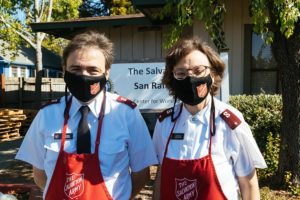 Soup. Soap. And Salvation. Since 1865, The Salvation Army has taken a holistic approach to serve those with the greatest need in our community. According to Diane Shatto, a Lieutenant and ordained minister at San Rafael’s branch of The Salvation Army, you can’t nourish people’s spirits until you nourish them with food. “That’s why our food pantry and home-delivered groceries are key activities for us.”
Soup. Soap. And Salvation. Since 1865, The Salvation Army has taken a holistic approach to serve those with the greatest need in our community. According to Diane Shatto, a Lieutenant and ordained minister at San Rafael’s branch of The Salvation Army, you can’t nourish people’s spirits until you nourish them with food. “That’s why our food pantry and home-delivered groceries are key activities for us.”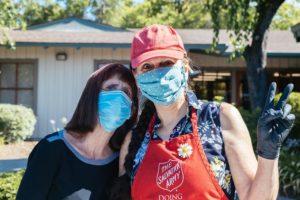 Carol Gotti has been volunteering with the Salvation Army’s food program for over ten years, and the participants are a lot more to her than names and numbers. “I’ve gotten to know about people’s lives, and you get a feeling about the things that bring people joy,” she said.
Carol Gotti has been volunteering with the Salvation Army’s food program for over ten years, and the participants are a lot more to her than names and numbers. “I’ve gotten to know about people’s lives, and you get a feeling about the things that bring people joy,” she said. 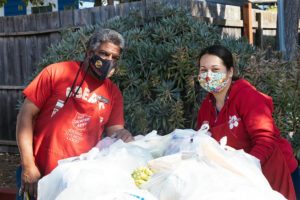 “I was the second youngest of five children with three older brothers who were always more aggressive than me about grabbing the food at dinnertime. I had hunger pains all the time, and other kids at school would make fun of me because I was skinny. It makes you feel inferior, you lose motivation, and you lose hope. And that’s how the cycle of poverty continues.”
“I was the second youngest of five children with three older brothers who were always more aggressive than me about grabbing the food at dinnertime. I had hunger pains all the time, and other kids at school would make fun of me because I was skinny. It makes you feel inferior, you lose motivation, and you lose hope. And that’s how the cycle of poverty continues.”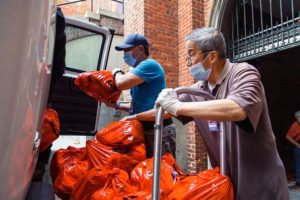 Groceries for Seniors operates out of the church basement where “each week, we create over 1,100 bags that we distribute to low-income seniors throughout the San Francisco area,” said Tim Thompson, who coordinates the deliveries. “We’re delivering about 240 to 250 bags per day.”
Groceries for Seniors operates out of the church basement where “each week, we create over 1,100 bags that we distribute to low-income seniors throughout the San Francisco area,” said Tim Thompson, who coordinates the deliveries. “We’re delivering about 240 to 250 bags per day.”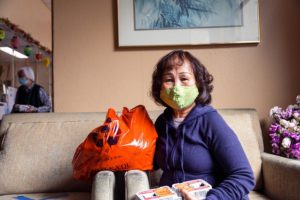 By around 10:30 in the morning, with the back of his van fully loaded, the delivery driver heads out to deliver the grocery bags. On Mondays, they deliver to Mei Lun Yuen, an apartment building in Chinatown that houses mostly low-income seniors and families of Chinese descent.
By around 10:30 in the morning, with the back of his van fully loaded, the delivery driver heads out to deliver the grocery bags. On Mondays, they deliver to Mei Lun Yuen, an apartment building in Chinatown that houses mostly low-income seniors and families of Chinese descent.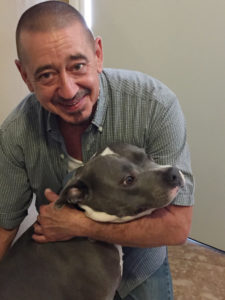 Fourteen years ago, Dru Devoe got on his Harley Davidson motorcycle and left his home in Florida with only clothes and whatever he could fit in his saddlebags. He landed in the Bay Area and eventually settled in Marin County.
Fourteen years ago, Dru Devoe got on his Harley Davidson motorcycle and left his home in Florida with only clothes and whatever he could fit in his saddlebags. He landed in the Bay Area and eventually settled in Marin County.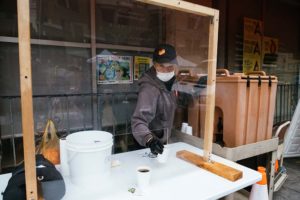 On a cold, damp San Francisco morning in late June, Clifford, William and Tommy sat together eating breakfast and sipping coffee in the parking lot of
On a cold, damp San Francisco morning in late June, Clifford, William and Tommy sat together eating breakfast and sipping coffee in the parking lot of 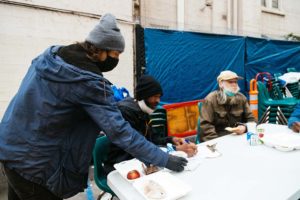 Food is central to creating community. When we can come together around a shared meal, we build connections, we foster understanding, and we grow together. And this isn’t true just of a family dinner or a special holiday celebration—meal programs like Glide’s are part of the fabric of our community.
Food is central to creating community. When we can come together around a shared meal, we build connections, we foster understanding, and we grow together. And this isn’t true just of a family dinner or a special holiday celebration—meal programs like Glide’s are part of the fabric of our community. 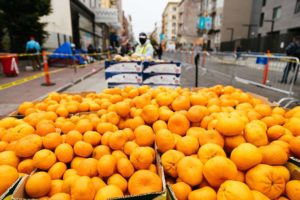 “People come to Glide where they receive breakfast, lunch and dinner, with much of the food coming from the Food Bank
“People come to Glide where they receive breakfast, lunch and dinner, with much of the food coming from the Food Bank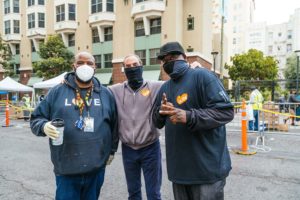 Another COVID innovation is the Monday Pop-Up pantry on Ellis Street. Every Monday, the Food Bank and Glide work in close collaboration to thoroughly clean Ellis Street and set up a pantry where people can safely come and choose healthy food for themselves and their families. Since many in the neighborhood don’t have cooking facilities, the Food Bank provides foods that require little or no cooking.
Another COVID innovation is the Monday Pop-Up pantry on Ellis Street. Every Monday, the Food Bank and Glide work in close collaboration to thoroughly clean Ellis Street and set up a pantry where people can safely come and choose healthy food for themselves and their families. Since many in the neighborhood don’t have cooking facilities, the Food Bank provides foods that require little or no cooking.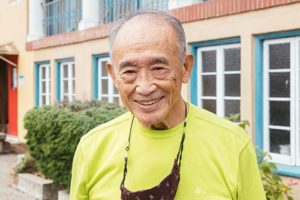 Covenant Presbyterian sits at the corner of 14th Avenue and Taraval Street and is deeply embedded in San Francisco’s Sunset District.
Covenant Presbyterian sits at the corner of 14th Avenue and Taraval Street and is deeply embedded in San Francisco’s Sunset District.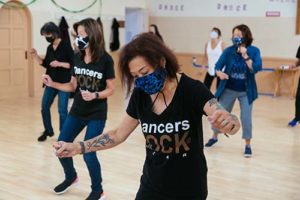 By 10:15 – just as dancers are making their way upstairs – volunteers are downstairs cleaning up the food pantry. Week three after a more than year-long hiatus everyone is excited to be back.
By 10:15 – just as dancers are making their way upstairs – volunteers are downstairs cleaning up the food pantry. Week three after a more than year-long hiatus everyone is excited to be back.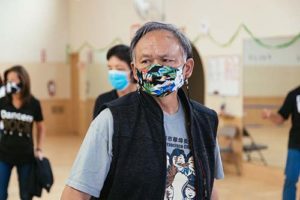 Just like the dance class, the pantry draws a loyal following of volunteers. Ranging in age from teenagers to over 90-year-olds, many have been coming since the pantry first opened its doors 15 years ago.
Just like the dance class, the pantry draws a loyal following of volunteers. Ranging in age from teenagers to over 90-year-olds, many have been coming since the pantry first opened its doors 15 years ago.
Share